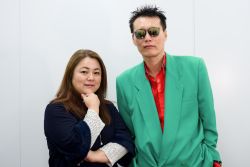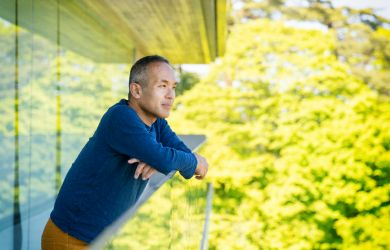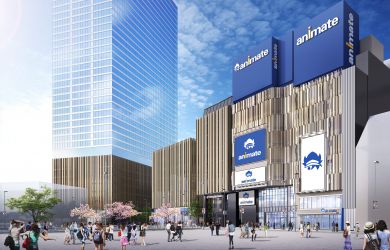
Originally published on metropolis.co.jp on August 2011

A cycling tour in Cambodia may sound like an arduous undertaking; especially if all you’ve ridden in Japan are clunky mamachari (shopping bikes). Even if you enjoy pedaling along the Tamagawa on your snazzy imported road bike, transporting your bike would surely involve a big expense and hassle, wouldn’t it? Not to mention weeks of planning and preparation for the trip itself.
Or not, if you go with a company like Spiceroads, based in Bangkok and specializing in cycling tours in Southeast Asia—though they now venture as far afield as Sri Lanka, Mongolia and Japan. They offer supported tours mostly in the one- to 14-day range.
Their definition of “support,” as a friend and I discovered on a seven-day journey from Bangkok to the Angkor Wat temple complex in Cambodia, was extensive—from detailed advice on shots, visas and other preparatory matters to an accompanying mini-van that kept us supplied with bottled water and assorted local snacks while on the road. They also put us up in luxury hotels and fed us meals at upscale restaurants patronized by well-heeled foreigners and the local elite. On most days, all we really had to buy for ourselves was the post-ride beer.
All this might sound expensive, but the total tour cost including bike rental was a shade over ¥80,000, which is about what you’d pay for a getaway weekend, transportation included, at one of the better onsen (hot springs).
Of course, at an onsen, you don’t have to spend three or four hours daily pumping a Trek mountain bike up hills, over dirt roads and, one memorable morning, in drenching rain over bone-jarring ruts. At the same time, that pedaling put us into intimate contact with our environment in a way a tour coach could not.

On our route, which took us deep into rural Thailand and Cambodia, we did not just see the sights and smell the smells (smoke at the Cambodian border from brush burning, a mix of flowers, incense and exhaust fumes around Angkor Wat), but greeted the locals, especially the hundreds of smiling kids who waved and shouted “hello” as we passed. We were also able to stop anywhere to snap photos, buy fresh coconut juice from a vendor on a rickety bike and watch a monkey and dog fight over scraps (the dog lost).
And after our longest day—87 clicks from the raw border town of Pailin, a refuge for former Khmer Rouge officials, to the thriving provincial city of Battambang, the food and beer tasted very good indeed. We also felt rather superior to the other tourists at the hotel, who had done nothing more strenuous that day than poke around temples while being hectored by postcard sellers.
Spiceroads rates all its tours on a scale of red peppers, from one (doable on a mamachari) to five (Tour de France level of fitness required). Ours was a three, which felt high when the four of us were zipping along a nearly deserted bike path near the breezy coast in Thailand’s Chantaburi Province, low when slogging up Cambodian border hills on a sweltering February afternoon. Bottom line: you’ll enjoy a trip like this more if you shape up before shipping out.
The big reason for doing the trip—the Angkor Wat temple complex—was also by far the most heavily touristed. Also, the big events the guidebooks all promote—sunrise at the Angkor Wat temple; sunset at the nearby hilltop Phnom Bakheng temple—were mild letdowns, first, since the sun and clouds were not cooperative, second, since the crowds of tourists jostling for a photo or view made the experience about as exotic as a visit to DisneySea. (Although at Phnom Bakheng you can hire an elephant for $20 to haul you to the top, which you can’t do in Mickey’s domain.)
It was more fun to explore Banteay Kdei, a ruined monastic complex returning to nature in spectacular fashion, with the roots of tall, centuries-old spong trees intertwining with the crumbling sandstone. There we came across a Buddhist altar presided over by a kindly elderly nun, who tied a red string around our wrists as a blessing (in return for a small offering).
Better known was Bayon Temple, a 13th-century pile decorated with dozens of large, impassively grinning stone faces (all supposedly resembling its builder, King Jayavarman VII) and intricately carved bas-reliefs depicting everything from epic battles to a circus with acrobats and jugglers (though at nearly 11,000 figures, they begin to blur into one long stone crowd scene).
One trip highlight had nothing to do with bicycles or temples at all: a day-long boat ride down the Sangke River from Battambang to Siem Reap, the city near the Angkor Wat complex. At the start, a riverside encampment of farmers and fishermen an hour’s jolting pickup ride away from the city, the river was barely navigable in our flat-bottomed tour boat. Our two guides and a young boatman had to pole it away from sand bar after sand bar.
The river soon began to widen, though, and as the day progressed and the boat putt-putted serenely, we saw river life subtly change, from impoverished fishermen setting their eel traps in muddy, shallow waters to relatively prosperous communities downstream, where stores sold everything from household necessities to cellphones and schools proudly announced their support by foreign NPOs with English signs on their sides. I felt a bit bad about the people upstream, who seemingly benefited little from this largesse. I also imagined the easy life in one of the snug wooden houses floating on the river, painted a cheery shade of blue and topped with a satellite dish.
The river emptied into the huge Tonle Sap Lake, which, as we reached its center, stretched to the horizon on all sides, calm and empty save for the occasional fishing boat. After what seemed an eternity, we arrived at the opposite bank and a narrow channel where a procession of tourist boats were coming the other way for a brief look at the lake and a small fishing village nearby.
My friend greeted the other tourists, mostly pale, puffy and over forty, who mostly ignored him. My first thought: we probably look too tanned, scruffy and backpacker-ish for these folks. My second: we’ve had the better trip.
Spice Roads Cycle Tours www.spiceroads.com





